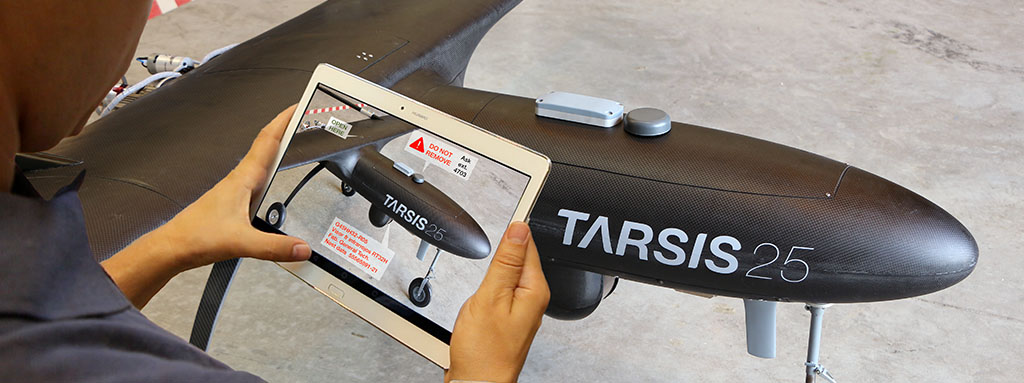Augmented reality is a current technology which allows one to add virtual contents to the real world, thereby increasing information, helping to improve knowledge of the surroundings and allowing for a better understanding of said surroundings. We construe any kind of artificially created text, image, video or other object as a virtual element.
More and more companies in any industry – and especially the aeronautical industry – are choosing to use this kind of technology due to the multiple advantages it offers in training, technical assistance or incident resolution. There are an ever-increasing number of applications and processes in which it is used, contributing to greater efficiency and reliability in all cases. But what exactly is augmented reality?
Paul Milgram, a professor at the Mechanical and Industrial Engineering Department of the University of Toronto, and Fumio Kishino defined it in 1994 as the area included between the two ends of a continuous scale running from a real environment to a virtual environment.
Augmented reality can become a highly valuable element to understand reality and can be applied to different areas of society as important as education, human interconnections or productivity, since it makes it easier for our brains to visualise and store information spatially and very quickly. Furthermore, some studies have shown that our brains have evolved to be in tune with 3D representations of complex tasks.
Despite this, its implementation has still not been completed due to the immaturity of the technology needed to carry it out. Technology, however, is reaching a level which seems to foreshadow that this particular technology will form part of our daily lives in the near future thanks to the boom in mobile devices and the evolution towards a simpler, user-friendly technology resulting from the power of microprocessors. Example:
There are an increasing number of devices in the field of augmented reality which provide new advantages when it comes to adding physical information to already existing information. We know that the most standardised devices used today for augmented reality are mobile phones and tablets. However, other specific devices for this kind of technology will be popularised in the not so distant future.
Augmented reality is on the verge of changing our experience of shopping, how we play video games or how we visit a museum. It seems that 2017 will certainly mark a watershed for this technology.
In the field of aeronautics, there are already several cases of augmented reality’s use or possible areas of research, such as:
- Learning. Training. Efficiency and productivity will be improved by having a more realistic view of complex parts or elements, the viewing of which is less objective on video or on hard‑copy plans.
- Guidance. Plans, manuals and complex wiring diagrams need to be understood for the work done by factory workers and for manufacturing. Manufacturing processes or wiring replacement or maintenance tasks in an aircraft or rack can be improved by optimising the use of goggles or tablets. Work timescales will therefore be shortened and costs will consequently be cut.
- Location in interiors. The use of augmented reality elements can improve the accuracy with which certain elements are placed due to the inefficiency of the operation of GPS‑based systems in interiors (such as an aeroplane or aircraft factory).
- Documentation/Information. The use of AR technologies can in many cases improve the inefficient handling of papers and plans, the searching and understanding of which can turn out to be tedious. Work orders and maintenance operations can therefore be improved.
- Remote support. Augmented reality can be used to complement expert teleassistance platforms by contributing the added value of including virtual information in the real systems being consulted to the support experience.



